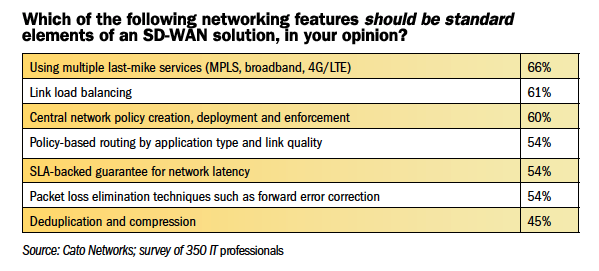Many enterprises are considering implementing SD-WAN as a way to reduce costs and improve connectivity. But making the transition from MPLS to SD-WAN requires careful planning to make sure that the transition is smooth and that valuable data remains secure.
To uncover the reality behind SD-WAN implementations, we are showcasing a series of spotlight Q&As about the technology. For the inaugural edition, we sat down with Ed Higgs, director of Global Service Delivery, and Mike Howell, manager of Global Infrastructure Engineering, at Rentokil Initial, the world’s leading commercial pest-control services provider and a leading commercial hygiene services provider. Its subsidiary Ambius meanwhile is a leading commercial provider of plants and scenting.
Based in the UK, Rentokil has more than 1,800 local service teams across the world, covering 91 percent of global GDP in over 90 of the world’s 100 largest cities across North America, Europe, the UK and Asia-Pacific. Operating in 70 countries, approximately 90 percent of its revenues are derived outside of the UK.
Needless to say, Rentokil’s IT and networking requirements are prodigious. It recently implemented an SD-WAN solution from VeloCloud. We decided to find out more about the company’s experiences with the technology.
ChannelVision: What made you decide to switch to SD-WAN? What benefits were you hoping to reap?
Howell: For Rentokil Initial there are many benefits in deploying SD-WAN. We had a number of challenges to address with our existing network architecture, particularly as we drive towards a more cloud-centric application architecture. The more we investigated, the more that it became clear that SD-WAN was well-positioned to help address most, if not all, of the challenges. The fundamental driver behind SD-WAN was a need to deliver low-latency, high-bandwidth connectivity to cloud-delivered services and applications, with a management platform that allowed us to manage and deploy at scale.
CV: Tell me a bit about the deployment: How many locations, and the pieces involved. What technologies were replaced? What unique requirements did you have as a company?
Howell: We currently have SD-WAN deployed in over 130 locations across five continents and 30 countries; over the next two years we are looking to scale that to our 800+locations globally. We never explicitly set out to replace any specific technology, we set out to build a better performing hybrid network using SD-WAN alongside direct internet access (DIA) and MPLS. As part of this re-architecture, we are constantly assessing which transport mechanism is right for each location, based on the requirements of the location–and ensuring this aligns strongly with our application strategy. The end-to-end encryption built into the SD-WAN platform (even when transporting across MPLS) was a big requirement for the business, as we drive to add additional layers of security to our data.
CV: Was this part of a larger digital transition? If so, why is SD-WAN an important piece of that initiative?
Higgs: Our network strategy needed to evolve at the same speed as our application-hosting strategy, to ensure optimum performance and appropriate resiliency to our end-user populations. SD-WAN allows our network strategy to meet those demands.
CV: How did you evaluate which SD-WAN solution to go with? What criteria were important to you?
Howell: We began by collating a list of requirements and challenges that were important to the business that we felt SD-WAN could help address. We then met with a number of vendors and assessed how their solution could satisfy those requirements. By the end of the process, we settled with the solution that we felt was in the best position to help us achieve our key objectives.
CV: What challenges did you run into during the implementation, and do you have any lessons learned that you can share?
Howell: Planning is key. There are many considerations in moving to a hybrid network architecture, and it’s very easy to get lost in the technical detail without considering the impact on service and support. There are a number of ways to consume SD-WAN, and you must take some time to consider which is right for you so that the platform is scalable and supportable within your enterprise going forward.
CV: Do you have any tips for other enterprises that may be considering the switch?
Howell: As above, planning is key.
CV: Any final thoughts?
Higgs: A direct quote from the Rentokil Initial 2016 Annual Report highlights how our leadership team understand the importance of technology and innovation within the business: “Over the next three years we see significant opportunities to drive revenues, reduce costs and help better serve and retain our customers through the deployment of digital technologies.”










